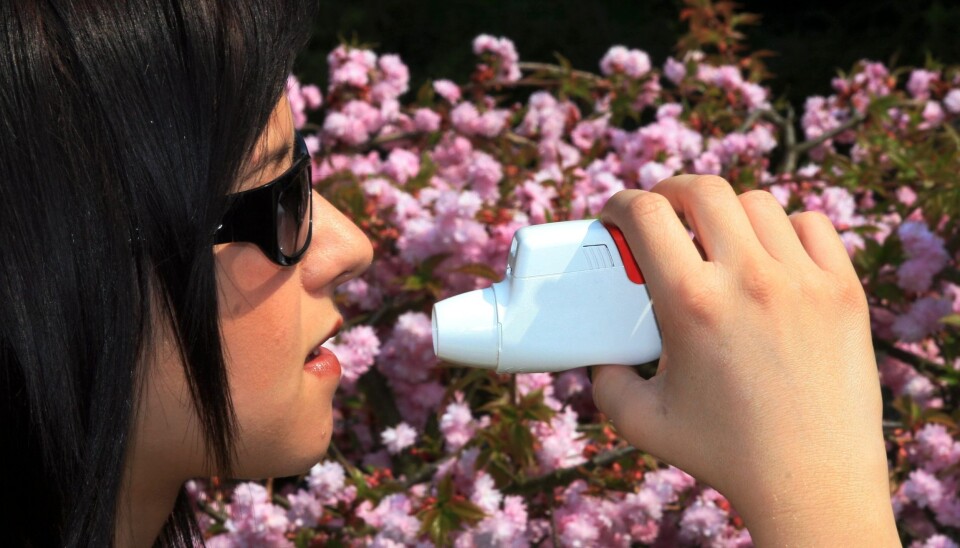This article was produced and financed by NILU - Norwegian Institute for Air Research

Risk of asthma added
Cleaning products and paints increase the risk of asthma and allergies in children.
Denne artikkelen er over ti år gammel og kan inneholde utdatert informasjon.
Offgassing from a group of chemicals - PGE - can result in a variety of allergic symptoms in children, such as asthma, eczema and hay fever.
This is suggested in a study done by researchers from the Harvard School of Public Health (USA), Karlstad University in Sweden and NILU, Norwegian Institute for Air Research.
“We have for the first time seen a correlation between the concentration of PGE in bedroom air, and an increased risk of allergies in children,” says Norbert Schmidbauer, senior scientist at NILU.
Schmidbauer believes it is important that these findings be examined more closely, and that there be a serious discussion about what our chemical society does to people’s health.

PGE - Propylene glycol and propylene glycol ethers - are additives in ordinary detergents, paint and polishes, cosmetics and a host of other “western lifestyle” products.
Doubled risk of asthma - tripled for hay fever
Even relatively modest amounts of PGE in indoor air show a clear statistical correlation with the incidence of asthma and allergy. The study has been on-going for nearly ten years, and is based on a survey of 400 children and their homes in Värmland in Sweden.
The study showed that children living in houses with the highest PGE concentrations (in the top 25 percent of the 400 houses surveyed) have a doubled chance of having asthma, are 150 percent more likely to have eczema and have a 320 percent higher likelihood of having hay fever. Among children with several symptoms, PGE exposure doubled the likelihood of developing hypersensitivity to other allergens.
Small concentrations
“This is the first time that there has been such a clear link between chemicals in indoor air and the occurrence of asthma and allergies,” says Schmidbauer. “But what is perhaps most startling is that this group of chemicals is present in relatively small concentrations - several hundred times lower than those that are reported as being harmful in workers such as professional painters.”
There is much to suggest that the statistical relationship the researchers found is not due to chance. The increase in symptoms was found for any increase in exposure level.
“This is the finding that confirms what we have feared, namely that the increased amount of chemicals in indoor air not only makes our groups suffer more, but that individuals can actually develop these diseases,” said Geir Endregard, Secretary General of the Norwegian Asthma and Allergy Association.
“This is such a disturbing finding that the government must immediately arrange for further investigation, while at the same time it must determine which products contain these substances, so that the process can begin to remove them,” says Endregard.
The development of asthma and allergy in children in Norway is steadily increasing, and 20 percent of children have or have had asthma by the time they are ten. More than 30 percent react positively to prick tests for one or more allergens at the same age.
The study itself offers no explanation for the biological and medical causes of the findings, nor how such relatively low concentrations can result in such chronic effects. The answers to these questions must be determined in further investigations. “The statistical study should be followed up by clinical studies, so we can find a medical explanation,” said Schmidbauer.
Our “chemical society”
“Nevertheless, we as a society should begin a serious discussion of our ‘chemical society’ - what this does to people’s health, and what we need to know to protect the population,” said Schmidbauer. “We must also discuss whether our risk assessments of chemicals are good enough to protect foetuses and infants,” says the researcher.
While this study was underway, two of the 17 chemicals in the PGE group, DEGBE and DEGME, were listed as harmful in the EU / EEA. They are now subject to much stricter limitations on the maximum amount permitted in products, and are partially banned in products that are sold to private individuals.
---------------------
Read the article in Norwegian at forskning.no



































